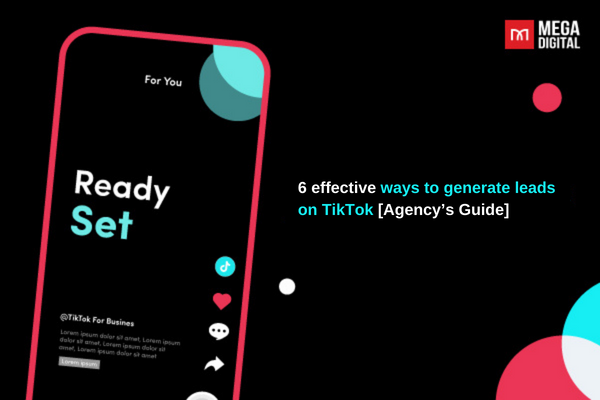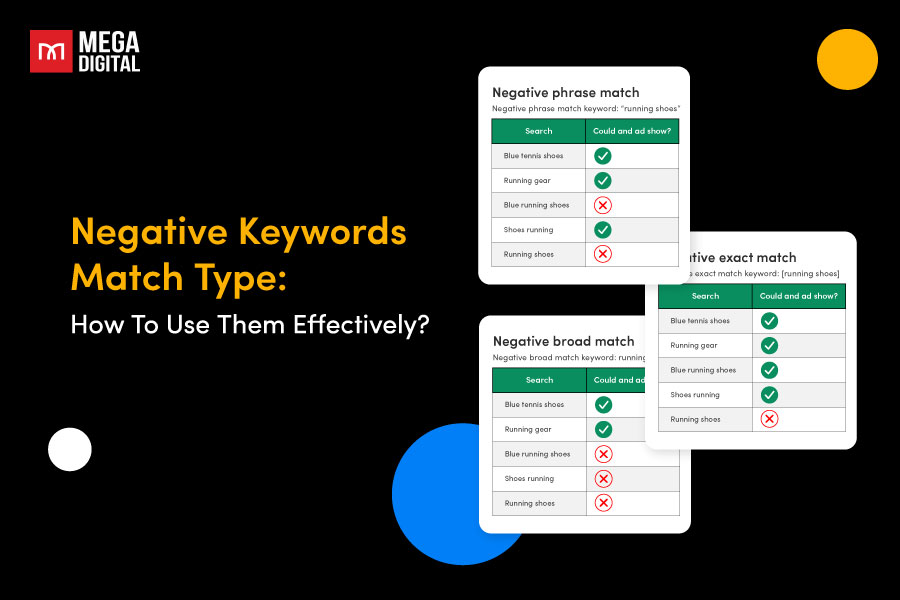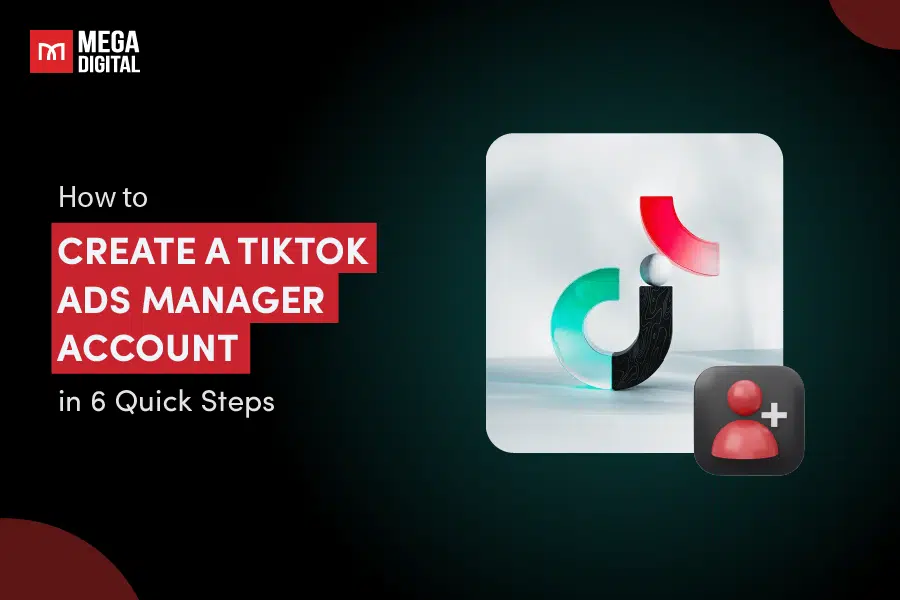Say goodbye to manual campaign management and hello to improved performance. Mega Digital presents everything you need to know about Google Performance Max! It’s designed to enhance your advertising approach using automation and machine learning. Dive into real-time insights, enhanced targeting, and boosted sales.
What is Google Performance Max?
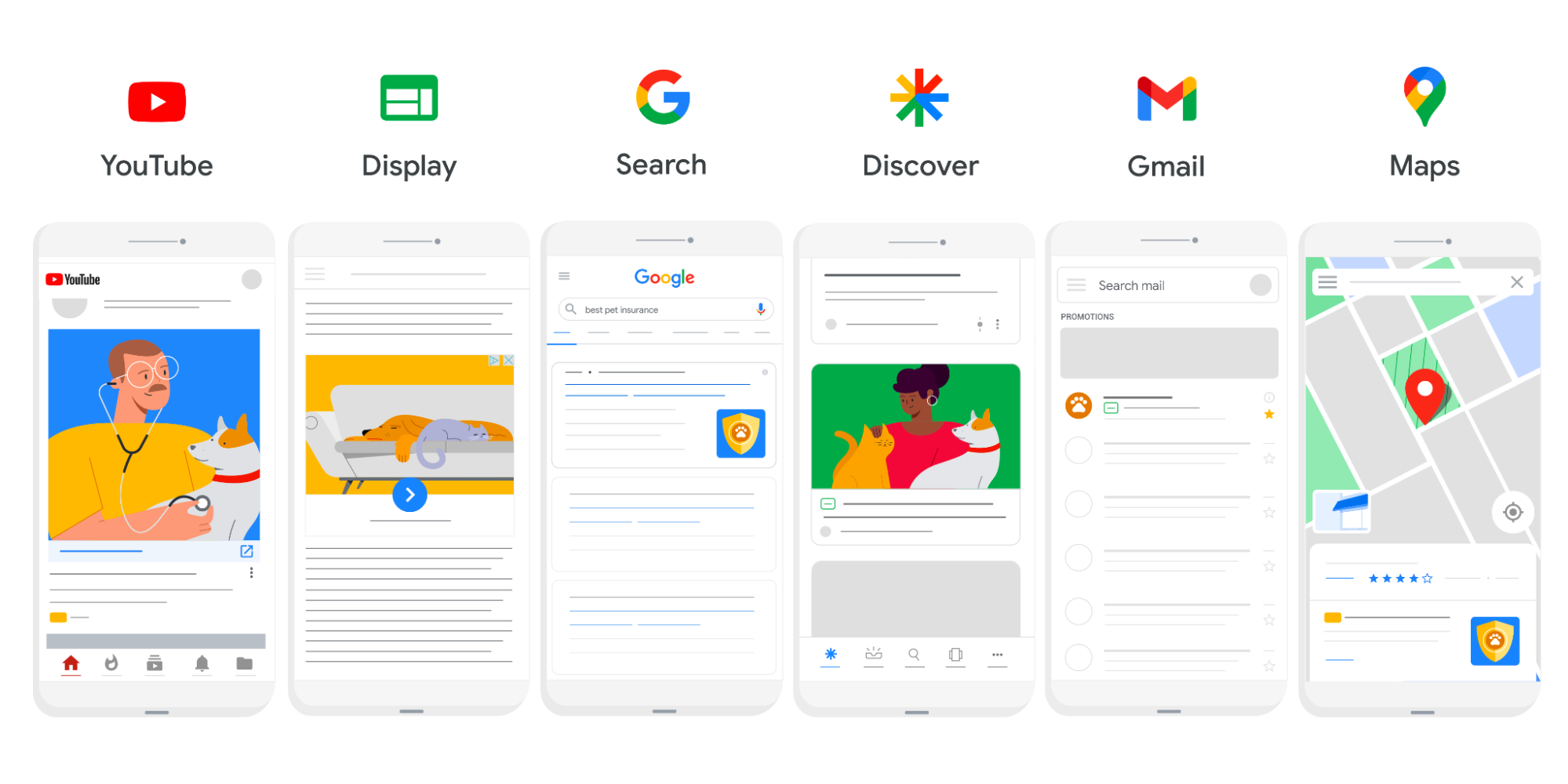
Performance Max stands out from other campaign types because it allows Google to take charge of targeting and delivering the ads. This means that based on the information provided by the advertiser, Google automates the process of deciding who gets to see the ads and when they are displayed.
This campaign can reach a wide audience across various Google platforms, including Search, Display, Maps, Discover Feed, YouTube, Gmail, and Shopping Ad Inventory.
When to use Performance Max
If you’re considering trying out Performance Max, be ready to spend around $50-100 per day for at least a month. Without this budget, you may not gather enough data and insights for the format to function effectively.
To use Performance Max, you have to connect your Google Ads account with your Google Merchant Center feed and include various assets like headlines, images, and videos. Google Ads will then use these elements in different combinations to create unique ads based on where they will be displayed.
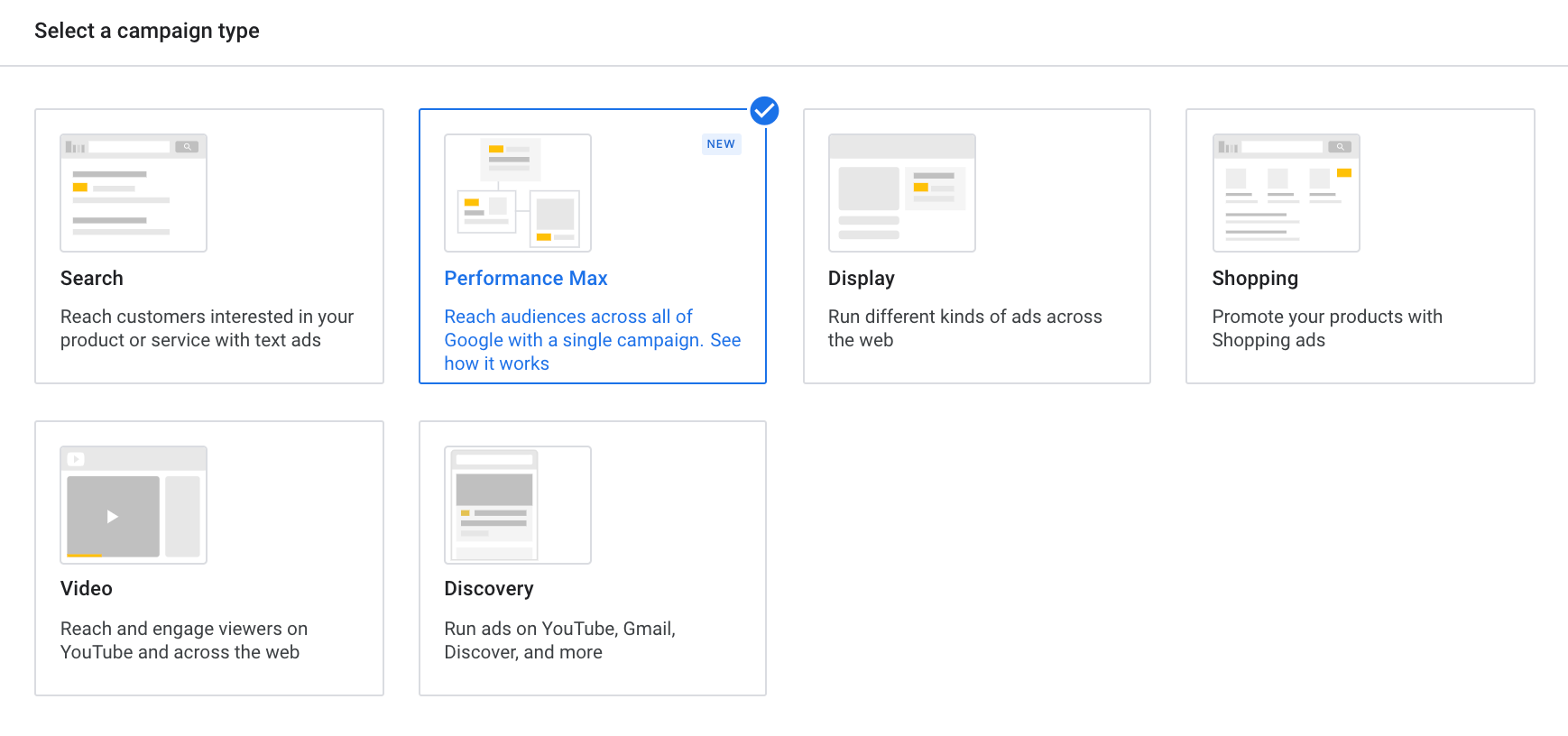
Choose Google Ads Performance Max when you:
- Have clear advertising and conversion goals (like boosting online sales or generating leads).
- Want to optimize campaign performance without being limited to specific ad placements.
- Prefer the convenience of using all Google advertising channels in one campaign.
- Aim to reach a wider audience and improve conversion value beyond traditional keyword-based Search campaigns.
Pros & cons of Performance Max
Pros of PMax
- Automatic: Performance Max campaigns are entirely automated, requiring minimal ad management. This is ideal for businesses needing more time or resources to handle complex campaigns.
- More conversions: By using additional Display-style placements, you can potentially expand your advertising reach. It can help you get more conversions by optimizing your ads across various placements and formats.
Cons of PMax
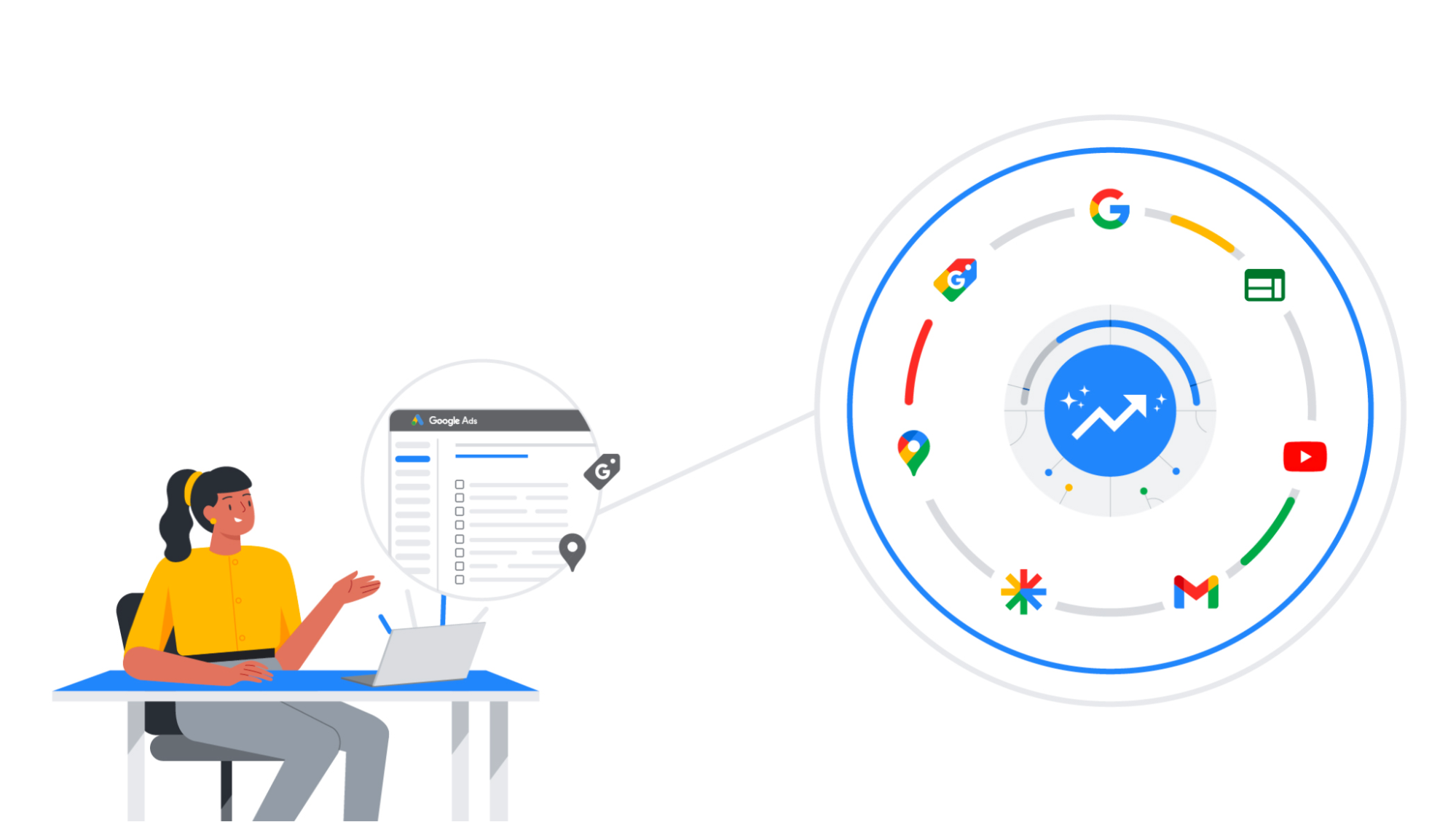
- Limited control: Performance Max campaigns are fully automated, providing limited control over targeting and ad delivery compared to manually managed campaigns.
- Limited insights: The campaigns lack detailed insights on specific keywords or phrases that lead to customer conversions, offering only limited information known as “top signals,” often closely tied to the brand name.
Performance Max vs. Standard Shopping
Currently, there are two options for running Shopping Ads: through a Performance Max campaign or a Standard Shopping campaign.
Now, let’s compare and evaluate these two methods.
| Criteria | Performance Max | Standard Shopping |
|---|---|---|
| Ad Placements | Search Network, Display Network, YouTube, Gmail, Discovery & Maps | Search Network (with Search Partners) |
| Reach | Wide | Limited |
| Bid Strategy | Maximize Conversions or Maximize Conversion Value (with optional targets) | Target ROAS, Maximize Clicks, Manual CPC, Enhanced CPC |
| Level of Control | Low | High |
| Conversion Volume Requirements | Minimum 50 conversions per month | Not applicable |
| Campaign Transparency | Low | High |
| Optimization Potential | Moderate | Very high |
| Dynamic Remarketing Included | Yes | No |
| Impact on Search Campaigns | Yes | None |
However, as Performance Max campaigns have become mandatory, we must adapt and strive to optimize our performance within this new framework.
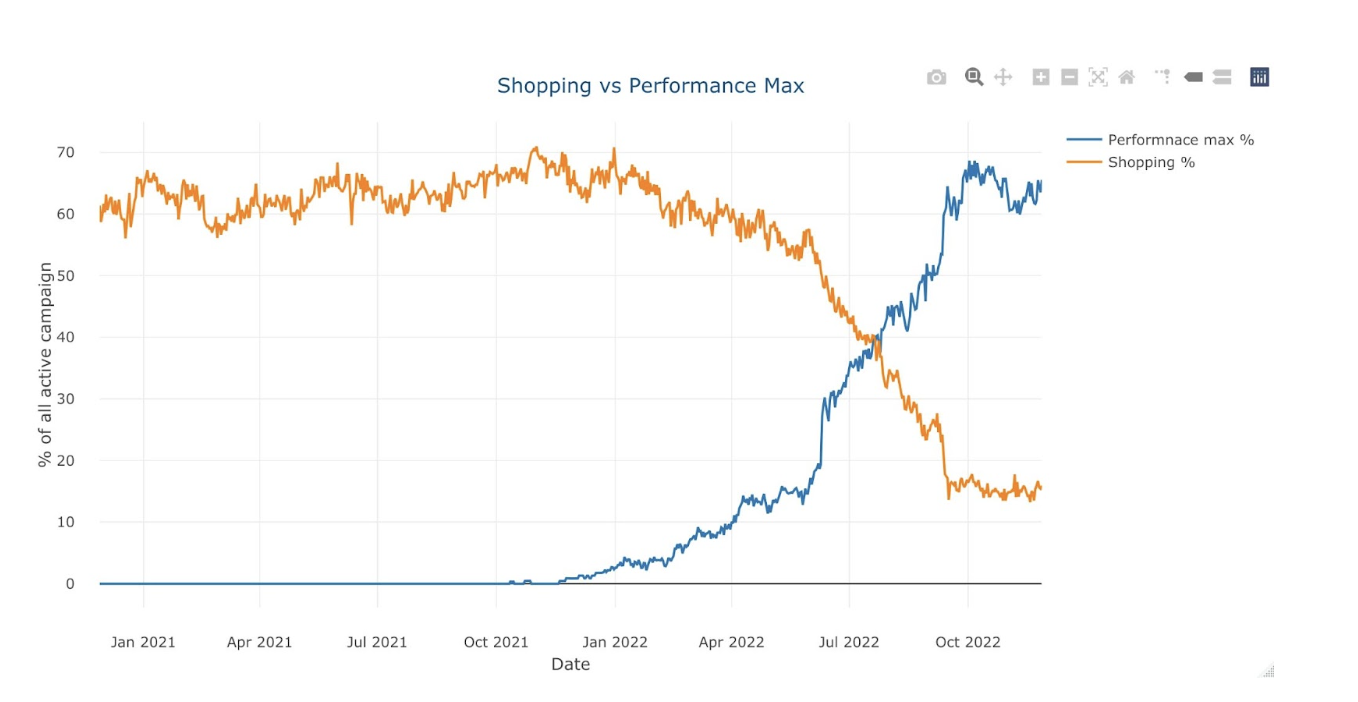
Below is a table that compares the essential metrics of Shopping campaigns and Performance Max for your reference. It provides a side-by-side analysis of key factors to help you understand the differences and evaluate their performance.

The data indicates that Google successfully enhanced the average click-through rate (CTR) through the Performance Max campaign, resulting in a 6% reduction in the average customer acquisition cost.
Read More: Performance Max vs Smart Shopping: Everything You Need to Know
How to run Performance Max campaigns right
To run Performance Max campaigns successfully, ensure that you meet the campaign requirements by providing the necessary assets and meeting the minimum criteria.
Performance Max campaign requirements
Make sure that you meet the minimum Performance Max asset requirements:
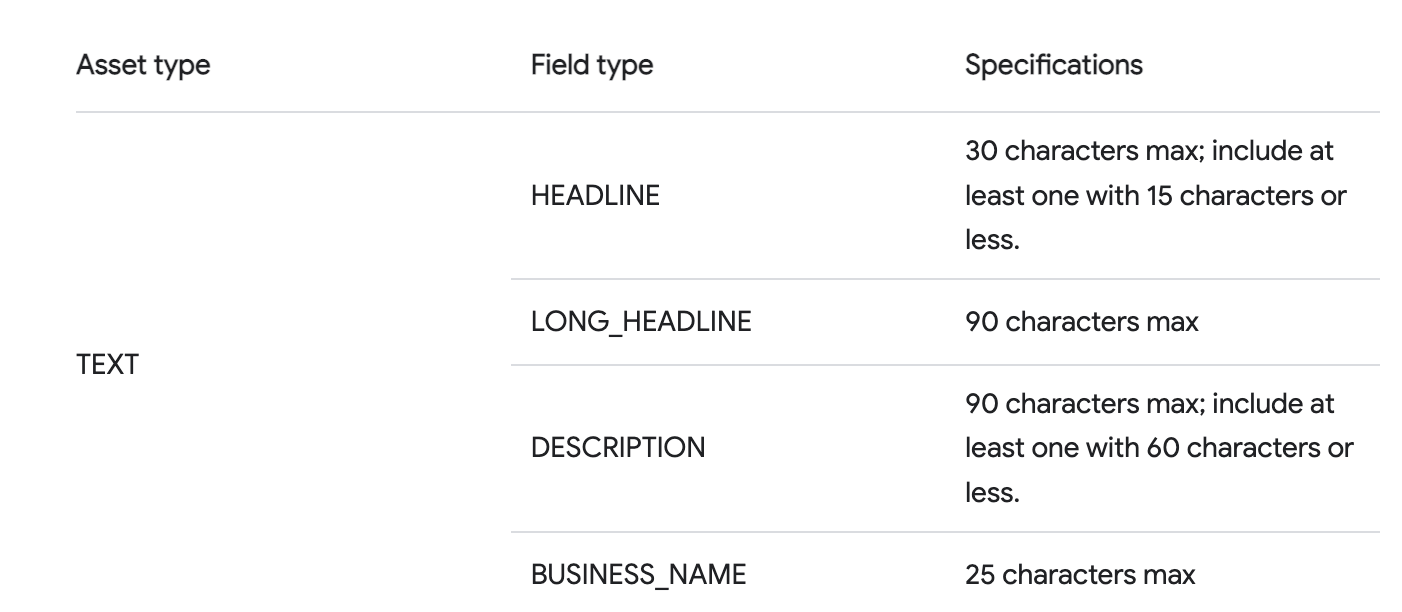
Audience signals
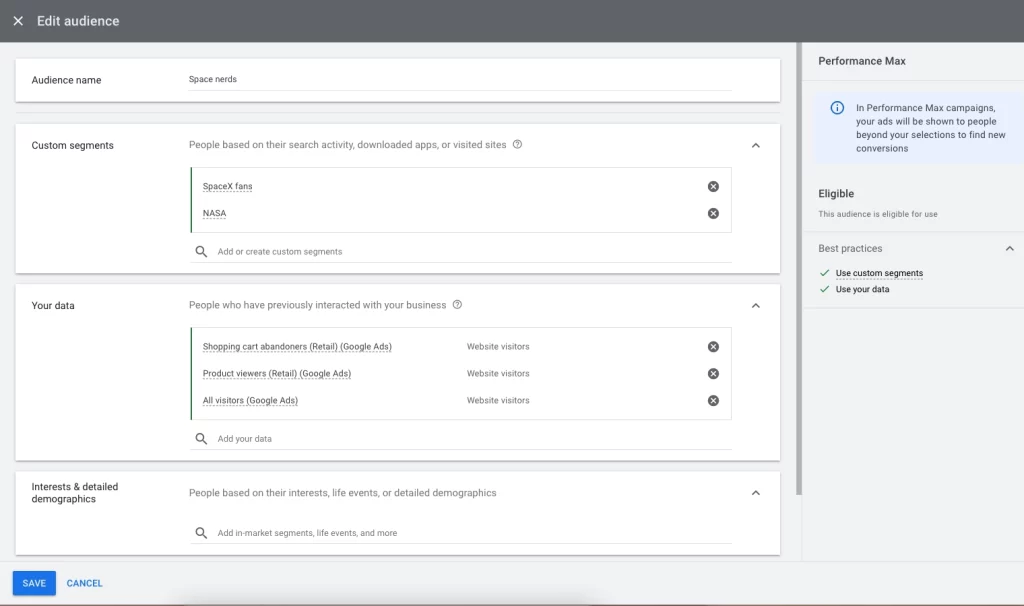
Audience signals are directions provided by advertisers to Google regarding the desired audience for their ads. These signals are not precise targets but rather suggestions that assist the algorithm in making informed decisions. They help guide the algorithm in the right direction for effective ad targeting.
An audience signal consists of a blend of the following elements:
- Custom segments
- Your own audiences, including remarketing audiences and customer match lists
- Interest and demographics, such as in-market and affinity audiences
Together, these components make up the audience signal, which aids in targeting the right audience for your ads based on specific criteria.
>>> Read more: What are Audience Signals in Performance Max Campaigns? [2023]
Assets (Ad Extensions)
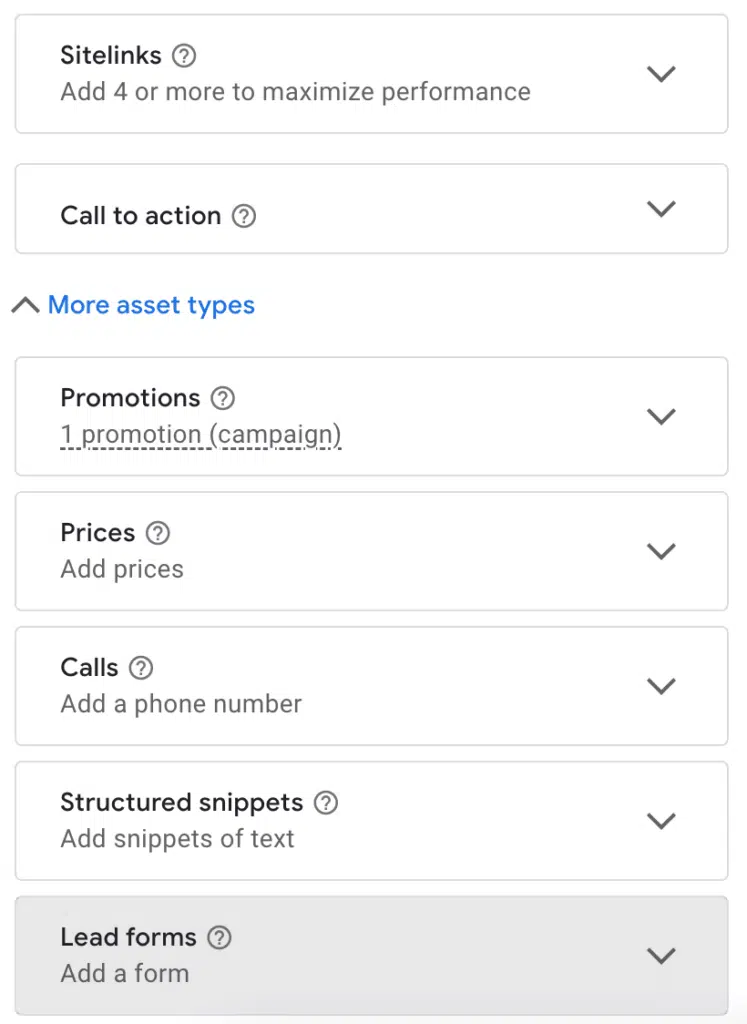
Performance Max assets are the creative components incorporated into your Performance Max campaign. These assets can include text, images, or videos. This group can be based on various themes like a brand, product category, or target audience. Google Ads intelligently combines and matches the creatives within the group to effectively display them across different channels.
Google Performance Max campaign assets can be categorized into 4 types:
- Texts
- Images
- Videos
- Extensions
>>> Read more: Complete Guide to Performance Max Assets: Specs & Best Practices
Performance Max benchmarks
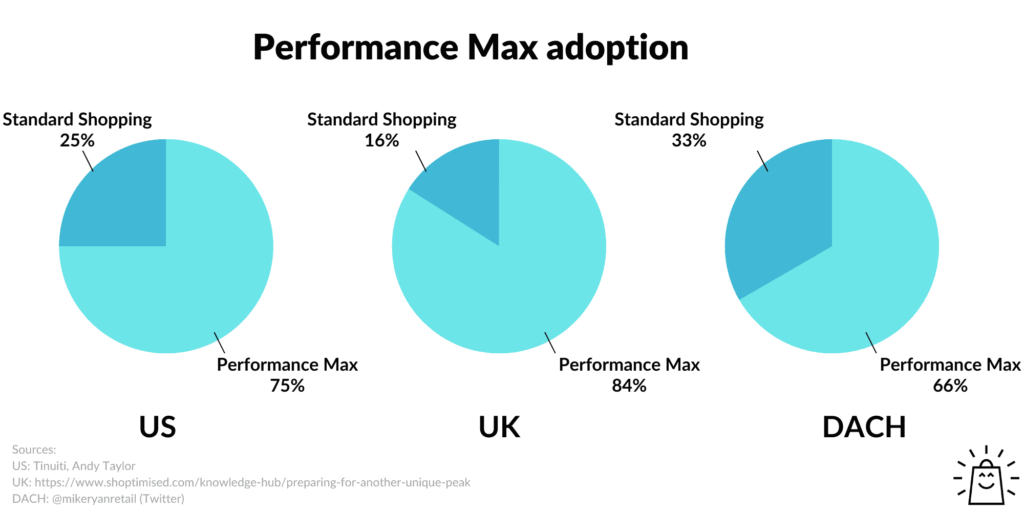
Click-through rate (CTR)
Your Performance Max campaign’s average click-through rate (CTR) is 1.01%. This means that approximately 1% of users who see your ads are clicking on them. Comparatively, the average CTR for Google Ads is around 1.42%, which is higher.
It’s important to note that specific search campaigns like brand, competitor, or campaigns targeting long-tail keywords tend to achieve higher CTRs. However, optimizing for link clicks and cheap traffic may increase your ad’s CTR but negatively impact your conversion rate (CR). For Shopify or other eCommerce stores, avoiding such optimization strategies is recommended.
>>> Read More: Ways to Optimize Performance Max for Ecommerce: 7 Valuable Tips
A CTR below 1% suggests that your ads connect more effectively with the intended audience or reach the right users. To enhance the CTR of your Performance Max campaign, it is advisable to focus on optimizing the ad copy, targeting, and ad placement. This involves making the ads more relevant and engaging to the target audience, increasing the likelihood of users clicking on them.
Cost-per-click (CPC)
In your Performance Max campaign, the average cost-per-click (CPC) is $0.62, indicating that you pay an average of $0.62 for each click on your ads. This CPC is comparatively lower than the average CPC in Google Ads, which is approximately $0.85. If you haven’t started a Performance Max campaign and are experiencing high CPC, now would be a favorable time to consider implementing it.
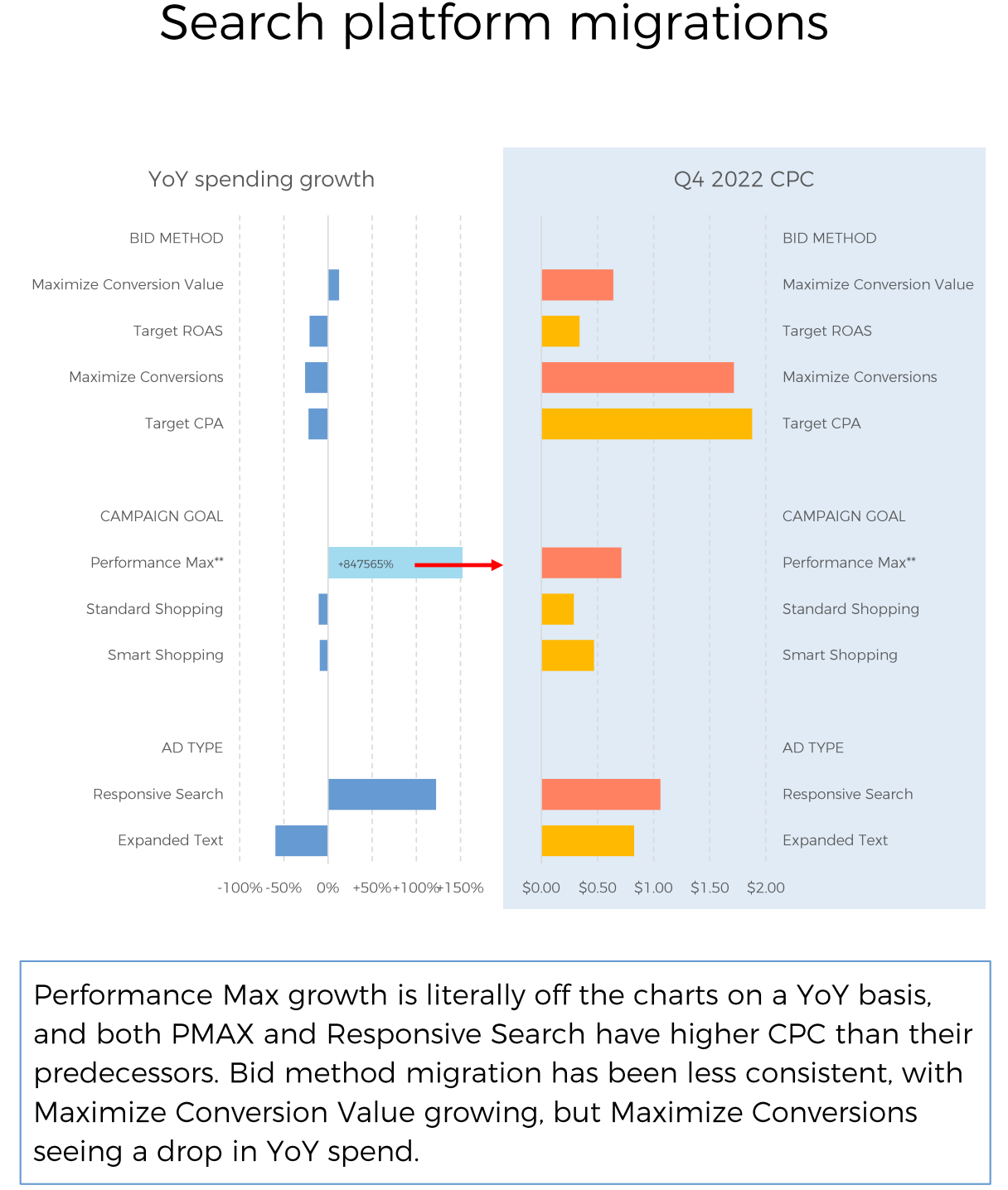
Conversion rate (CR)
The average conversion rate for Performance Max campaigns optimized for the Purchase event is 2.04%, similar to the average conversion rate for all campaign types on Google Ads (2.06%). The conversion rate reflects the percentage of users making a purchase after clicking an ad. A high conversion rate indicates effective ads, while a low rate may highlight issues with landing pages. Improve website user experience if CTR is high, but CR is below average.
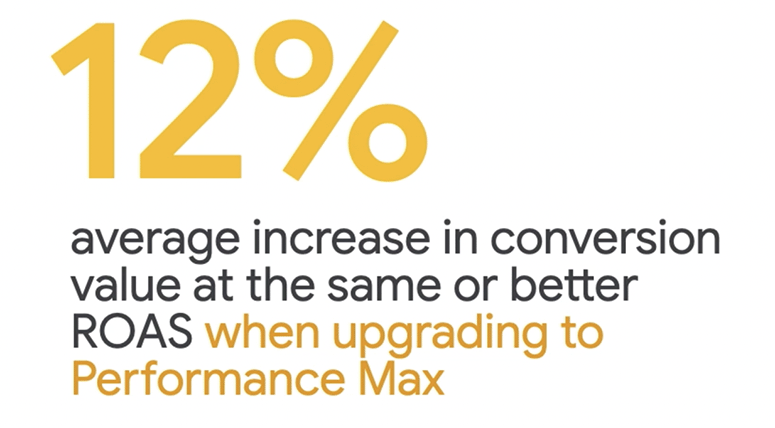
Return on ad spend (ROAS)
The average return on ad spend (ROAS) for a Performance Max campaign is 125%. This indicates that, on average, you can generate $125 in revenue for every $100 spent on the campaign.
To enhance the ROAS of your Performance Max campaign, optimizing the targeting, ad copy, and landing pages is advisable. This involves making them more relevant, persuasive, and engaging to the target audience. Additionally, adjusting the bid strategy can ensure that the ads are displayed to the most relevant and potential conversion-driven users.
>>> Read more: 10 Google Ads Metrics You Need to Track Daily
FAQs about Google Performance Max

Is Performance Max worth it?
Yes. Performance Max campaigns launched in November 2021, but gained significant traction when advertisers were required to transition from Smart Shopping in September 2022.
In general, Performance Max effectively generates new leads improves return on ad spend (ROAS), and provides a positive mobile user experience.
Read More: Performance Max Reporting: View insights & Optimize your campaign
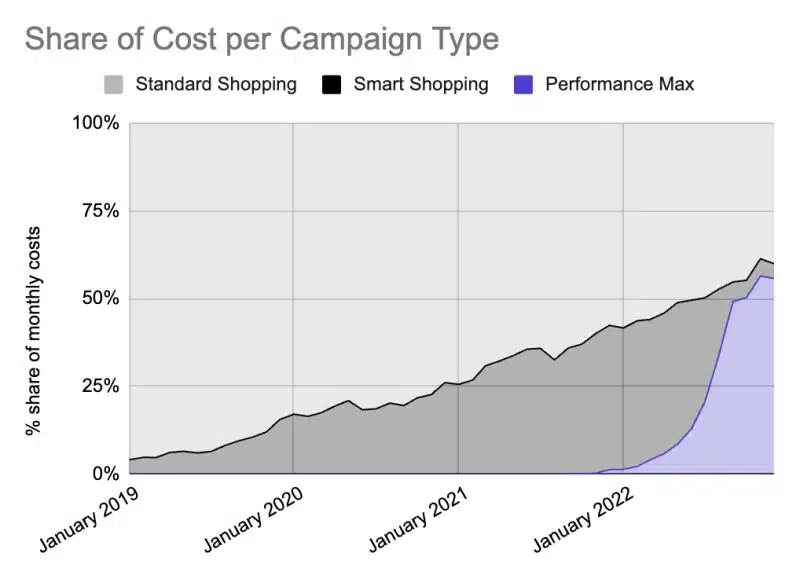
Can you run Performance Max without video?
Yes, creating a Performance Max campaign without video is possible. Google can generate videos based on your image assets to display on YouTube. You can exclude video assets if you only want to run Performance Max for shopping. However, it is recommended to have a top-of-the-funnel campaign accompanying it.
How long does it take for Performance Max to learn?
Your Performance Max campaign may take 2-3 days to ramp up and gain traction. Consider pausing your Shopping campaign once your Performance Max campaign is fully operational.
Final words
Google Performance Max ads is a powerful campaign type that optimizes bids and ad placements for maximum results. If you’re looking to enhance your shopping advertising and make the most out of Performance Max, Mega Digital’s Shopping advertising service can help. With our expertise and tailored strategies, we can drive targeted traffic and increase conversions for your business.







